Sherin Muckatira
Emergent Abilities in Reduced-Scale Generative Language Models
Apr 02, 2024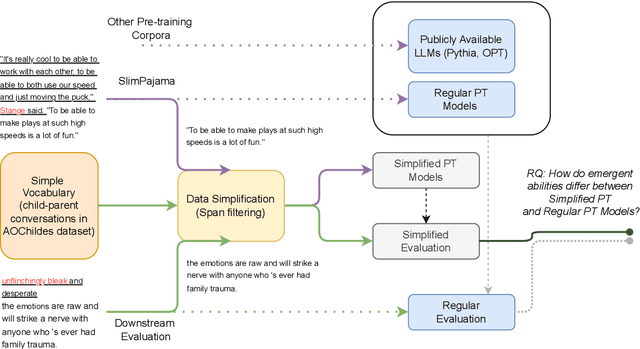
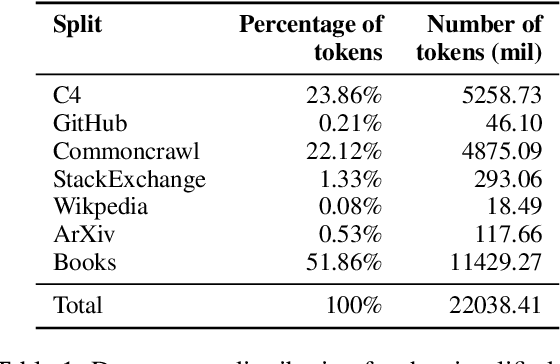
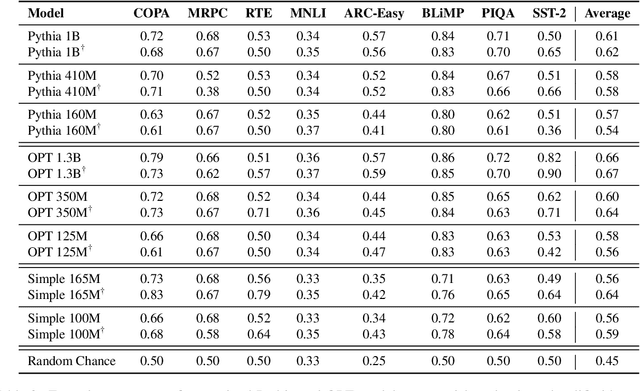

Abstract:Large language models can solve new tasks without task-specific fine-tuning. This ability, also known as in-context learning (ICL), is considered an emergent ability and is primarily seen in large language models with billions of parameters. This study investigates if such emergent properties are strictly tied to model size or can be demonstrated by smaller models trained on reduced-scale data. To explore this, we simplify pre-training data and pre-train 36 causal language models with parameters varying from 1 million to 165 million parameters. We show that models trained on this simplified pre-training data demonstrate enhanced zero-shot capabilities across various tasks in simplified language, achieving performance comparable to that of pre-trained models six times larger on unrestricted language. This suggests that downscaling the language allows zero-shot learning capabilities to emerge in models with limited size. Additionally, we find that these smaller models pre-trained on simplified data demonstrate a power law relationship between the evaluation loss and the three scaling factors: compute, dataset size, and model size.
Deconstructing In-Context Learning: Understanding Prompts via Corruption
Apr 02, 2024



Abstract:The ability of large language models (LLMs) to "learn in context" based on the provided prompt has led to an explosive growth in their use, culminating in the proliferation of AI assistants such as ChatGPT, Claude, and Bard. These AI assistants are known to be robust to minor prompt modifications, mostly due to alignment techniques that use human feedback. In contrast, the underlying pre-trained LLMs they use as a backbone are known to be brittle in this respect. Building high-quality backbone models remains a core challenge, and a common approach to assessing their quality is to conduct few-shot evaluation. Such evaluation is notorious for being highly sensitive to minor prompt modifications, as well as the choice of specific in-context examples. Prior work has examined how modifying different elements of the prompt can affect model performance. However, these earlier studies tended to concentrate on a limited number of specific prompt attributes and often produced contradictory results. Additionally, previous research either focused on models with fewer than 15 billion parameters or exclusively examined black-box models like GPT-3 or PaLM, making replication challenging. In the present study, we decompose the entire prompt into four components: task description, demonstration inputs, labels, and inline instructions provided for each demonstration. We investigate the effects of structural and semantic corruptions of these elements on model performance. We study models ranging from 1.5B to 70B in size, using ten datasets covering classification and generation tasks. We find that repeating text within the prompt boosts model performance, and bigger models ($\geq$30B) are more sensitive to the semantics of the prompt. Finally, we observe that adding task and inline instructions to the demonstrations enhances model performance even when the instructions are semantically corrupted.
Let's Reinforce Step by Step
Nov 10, 2023

Abstract:While recent advances have boosted LM proficiency in linguistic benchmarks, LMs consistently struggle to reason correctly on complex tasks like mathematics. We turn to Reinforcement Learning from Human Feedback (RLHF) as a method with which to shape model reasoning processes. In particular, we explore two reward schemes, outcome-supervised reward models (ORMs) and process-supervised reward models (PRMs), to optimize for logical reasoning. Our results show that the fine-grained reward provided by PRM-based methods enhances accuracy on simple mathematical reasoning (GSM8K) while, unexpectedly, reducing performance in complex tasks (MATH). Furthermore, we show the critical role reward aggregation functions play in model performance. Providing promising avenues for future research, our study underscores the need for further exploration into fine-grained reward modeling for more reliable language models.
Stack More Layers Differently: High-Rank Training Through Low-Rank Updates
Jul 13, 2023



Abstract:Despite the dominance and effectiveness of scaling, resulting in large networks with hundreds of billions of parameters, the necessity to train overparametrized models remains poorly understood, and alternative approaches do not necessarily make it cheaper to train high-performance models. In this paper, we explore low-rank training techniques as an alternative approach to training large neural networks. We introduce a novel method called ReLoRA, which utilizes low-rank updates to train high-rank networks. We apply ReLoRA to pre-training transformer language models with up to 350M parameters and demonstrate comparable performance to regular neural network training. Furthermore, we observe that the efficiency of ReLoRA increases with model size, making it a promising approach for training multi-billion-parameter networks efficiently. Our findings shed light on the potential of low-rank training techniques and their implications for scaling laws.
Properties Of Winning Tickets On Skin Lesion Classification
Aug 25, 2020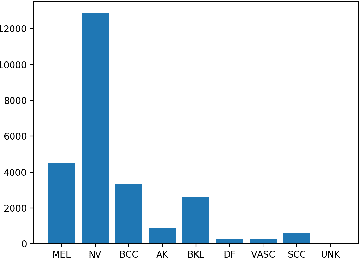

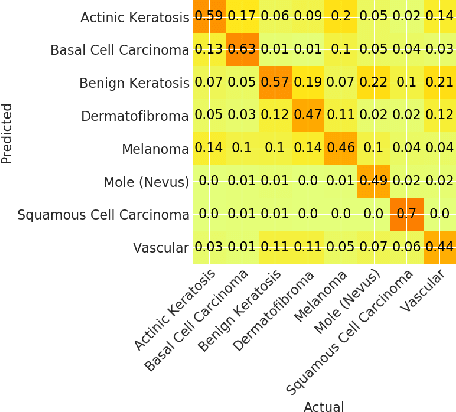

Abstract:Skin cancer affects a large population every year -- automated skin cancer detection algorithms can thus greatly help clinicians. Prior efforts involving deep learning models have high detection accuracy. However, most of the models have a large number of parameters, with some works even using an ensemble of models to achieve good accuracy. In this paper, we investigate a recently proposed pruning technique called Lottery Ticket Hypothesis. We find that iterative pruning of the network resulted in improved accuracy, compared to that of the unpruned network, implying that -- the lottery ticket hypothesis can be applied to the problem of skin cancer detection and this hypothesis can result in a smaller network for inference. We also examine the accuracy across sub-groups -- created by gender and age -- and it was found that some sub-groups show a larger increase in accuracy than others.
 Add to Chrome
Add to Chrome Add to Firefox
Add to Firefox Add to Edge
Add to Edge